Spring 2012 A publication of the Wildlife Division—Getting Texans Involved
The Trans-Pecos
The western region of Texas is a land of great diversity. Desert lowlands give way to mountain forests and canyon lands with rugged sides and seasonal streams. This landscape diversity presents some interesting challenges to the land manager, and the authors of our spring newsletter explore the plants, animals and fishes that are found in this unique region. Scroll down to find guidance, reports and a surprising historical perspective of the wildlife of the Trans-Pecos.
Pronghorn Problems in the Trans-Pecos
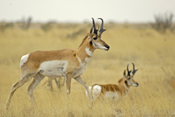
By Shawn Gray
Pronghorn are unique, highly specialized, icons of the prairie. Being the only remnant species of a family that evolved millions of years ago, pronghorn are the ultimate symbol of perseverance and adaptation. However, recent population declines in the Marfa Plateau are putting the pronghorn's perseverance to the test.

Understanding the Plants
A Landowner's First Step in Wildlife Management
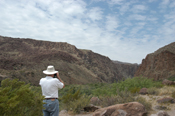
By Philip Dickerson
After 28 years in the natural resource field you get to see a lot changes take place. Many advances have been made and much knowledge learned. But it's still somewhat surprising to me that folks will purchase a property on the internet without having seen it or without having reasonable knowledge of the plants that occur there. In my opinion, the plants have a lot to do with potential wildlife values and property values.

Mountain Lions in Texas
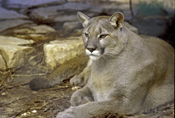
By Jonah Evans
Large predators inspire awe, excitement, and fear. While many people are intrigued by their strength and prowess, others are more wary of the potential danger to humans and livestock. Efforts to exterminate large predators were once widespread, with federal bounties offered for numerous species. Of the 6 large predators (gray & red wolf, grizzly & black bear, jaguar, and mountain lion) known to have occurred in Texas when Europeans first arrived, all but mountain lions were wiped out of the state. Black bears have made a modest comeback in the last few decades by crossing over from neighboring states and Mexico.

Staffing Changes at Texas Parks and Wildlife
By Mark Klym
Fall of 2011 brought some interesting changes to the Wildlife Diversity Program at Texas Parks and Wildlife.

The Desert Bighorn Sheep Restoration Effort:
A Work in Progress
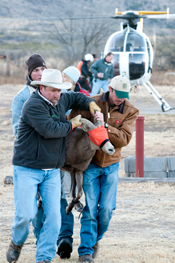
By Froylan Hernandez
Historically, the native Texas desert bighorn sheep occupied 15-16 mountain ranges in the Trans-Pecos region. In the 1880s, an estimated 1500 bighorns inhabited these mountain ranges and possibly 2500+ prior to 1880. However, by the mid-1940s they had disappeared from much of their native mountain ranges. And by the early 1960's, the native bighorns had been extirpated. Their demise is attributed to unregulated hunting, the introduction of domestic sheep and goats that competed with bighorns for resources, domestic sheep/goat diseases that bighorns had not been exposed too, and net-wire fencing that impeded natural movements in search of food and water.

Fishes of the Texas Desert
By Stephanie Shelton and Gary Garrett
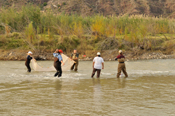
Organisms of the Chihuahuan Desert in Texas present biologists with some of the most fascinating examples of how to exist in an extreme environment. Unfortunately, they also present us with some of the most formidable challenges to resource conservation and ensuring survival of these sometimes rare species. The mission of Texas Parks and Wildlife Department is to make sure that future generations of Texans can count on healthy, intact ecosystems such as the Chihuahuan Desert, but we could not do it without the many partners we work with (e.g., state and federal agencies, NGOs and universities) and most importantly the stewardship of the private landowners of Texas.

San Solomon Springs Cienega
By Mark Lockwood
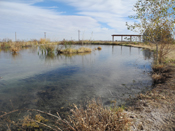
Although Balmorhea State Park is best known for the spring-fed pool, it is also an import conservation area. San Solomon Spring flows at a rate of at least 15 million gallons a day and prior to the construction of the pool by the Civilian Conservation Corp (CCC) in the 1930s this spring formed a large ciénega. These desert marshes provided important habitat for a wide variety of aquatic organisms. San Solomon Spring is home to a number of species of conservation concern including two fishes and three invertebrates that are either listed as endangered or threatened or are candidates for listing. This makes the 45-acre Balmorhea State Park a very important conservation area.

Saltcedar Beetle and The Rio Grande
By Kristi Drake
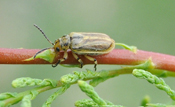
The life of the Rio Grande starts in Colorado as a clear, spring and snow-fed stream in the high elevations of the San Juan Mountains. Cold and crisp, its water rages down the middle of New Mexico to El Paso and Cuidad Juárez. A drastic change in flow occurs here as the Rio Grande starts to form the 1,248 miles of International Boundary between Texas and Mexico.

21st Century Dinosaurs - Horned Lizards in West Texas
By Lee Ann Linam
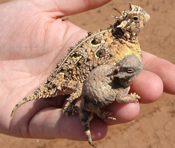
What looks like a miniature dinosaur, has horns on its heads, spikes on its sides, can harvest rainwater with its scales and squirts blood from its eyes? Everyone (or at least every Texan) knows that's a horned toad!

Vegetation Changes
By Calvin Richardson
Considerable information about historical Trans-Pecos landscapes (prior to Anglo settlement) has been accumulated from survey records, journals, photographs, and various other records from early explorers of the region.

Volunteering at the Big Bend Ranch State Park:
How I Got Here
By Gary Nored
My journey to this place began over 20 years ago on the Rancheria trail. I'd been hiking and exploring West Texas for many years then, and the trail passed through country I'd wanted to see for many years. It was a long hike for a city guy who worked a sedentary job, but I wasn't worried. Had I not already hiked the South Rim and spent two nights there with three days' water? Had I not hiked the famous Dodson Trail that circles the entire southern portion of the Chisos mountains, and lived to tell of it? Pshaw! Piece of cake.

On The Back Porch
What we do: Work as a Trans-Pecos Wildlife Biologist
By Billy Tarrant
Several years back, during a social event at a TPWD Wildlife Division Staff Meeting, I subjected many of my unprepared coworkers to an impromptu poll questioning their professional desires. My question was simple: "As a wildlife biologist, putting all other personal conflicts aside, what part of Texas would you most want to work in?" Without exception, each of my victims responded that the Trans-Pecos would be their first choice. And, without exception, they each followed that up with several personal conflicts that would prohibit them from ever working in the Trans-Pecos.

Did You Know?
- Did you know that grasslands were once widespread in west Texas?
- Did you know that Texas is home to three species of horned lizards?
- Did you know that beetles are now being used to help control salt cedar in Texas?
- Did you know that the Desert Bighorn Sheep population in Texas may be as high as 1100 individuals?
- Did you know that Texas is home to two diverse mountain lion populations?
Wild Stuff!
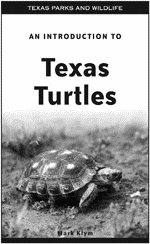
Introduction to Texas
Turtles Booklet
Send an email request to mark.klym@tpwd.state.tx.us
Help protect native non-game species like the Horned Lizard with the purchase of the Horned Lizard license plate. The cost is just $30*, with $22 going directly to benefit the conservation of wildlife diversity in Texas.
Order online today and get your plate in just two weeks!
www.conservation-plate.org/nature
*In addition to regular vehicle registration fees.
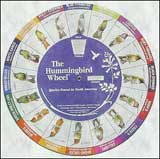
Hummingbird Wheel
This 10" full-color identification wheel is a helpful reference to keep nearby when you watch the hummingbirds. Sixteen hummingbird species are featured, all of which have been documented in Texas! For each bird, the wheel tells you its range in North America, Habitat Type, and distingishing features of both males and females.
Send $11.95 (shipping and handling included) to Texas Hummingbird Roundup, 4200 Smith School Road, Austin, Texas 78744.


 Texas Parks and Wildlife Department, 4200 Smith School Road, Austin, TX 78744
Texas Parks and Wildlife Department, 4200 Smith School Road, Austin, TX 78744


